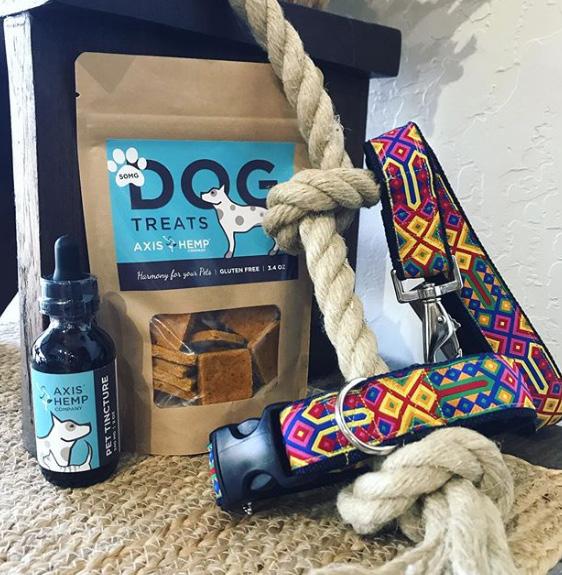
5 minute read
SOIL 101 FOR ARIZONA
SOIL 101 FOR ARIZONA WHAT YOU NEED TO KNOW BY EMILY ROCKEY
Perhaps you’ve heard this lamentation from Arizona residents, or maybe you’ve even thought it yourself. However, two of our state’s five “Cs” that represent major industries here—cotton and citrus—grow in Arizona soil; plus a third (cattle) depends upon the soil. Do we actually have “bad soil”? Or might it be that if we learn a little about desert soils, we would find greater understanding, and in turn, greater success in our gardening endeavors?
What is “good soil”? There is no one-size-fits-all answer when it comes to soil, as it depends upon the preference of the plant. If you learn how a species grows in nature, and then mimic those conditions, you will likely find success. A saguaro cactus grows wild in the Sonoran Desert where soils are sandy and lack organic matter, and do not hold moisture between scarce rain events. On the other hand, a lush fern that grows wild in moist, cool forests with ample shade and rich soil would do very poorly where the saguaro cactus flourishes. The cacti and other Arizona native plants are adapted and designed "I have such bad soil."
to thrive in this soil and in the hot, arid conditions. To put a twist on the old saying, “To each plant their own soil.” Once we identify what we’d like to grow and what environmental conditions those plants prefer, we can start to build a soil. In our backyards we have Sonoran Desert soils, so the easiest plants to grow are those that are native to the area, where the conditions match the plants’ needs. But if you wish to grow a non-native vegetable garden, or a fruit tree, our native soil will perform well with just some soil amendments. Here is a guide. FIND BALANCE IN THE SOIL
Soil particles—sand, silt, and clay—should be balanced to allow water to drain, but not dry out so quickly that the plant is stressed for water. AERATION IS KEY
Many people do not know that air spaces in the soil are just as important as water retention. Plant roots need oxygen
VISIT OUR STORE & RECEIVE 20% OFF YOUR FIRST PURCHASE OR ORDER ONLINE USING CODE: GREENLIVING20 (Offer valid through EARTH DAY 4/22/20, one-time use per customer) choose hemp HELP SAVE THE PLANET







to respire, and are light or white in color when healthy. Make sure the soil drains well and is not saturated (unless they are water plants!). INSULATE AND COVER THE SOIL
In all climates and especially the desert, mulch is invaluable for its ability to conserve water. By creating a barrier, mulch reduces evaporation from the soil and lowers water usage. It also insulates from extreme temperatures during both the winter and the summer. Did you know it can be 10 to 30 degrees F cooler beneath a layer of organic mulch such as wood chips or compost? Furthermore, as organic mulch breaks down over time, it adds nutrients back into the soil. BUILD UP ORGANIC MATTER
Perhaps the most drastic difference between desert soils and those of other parts of the U.S. is organic matter. Decomposing leaves are an example of organic matter. While most soils contain up to 10 percent organic matter, desert soils contain less than 1 percent!
You might ask, “Organic matter, what does it matter?” In nature, it is common to see plant debris on the ground. This layer of material, once living, provides many benefits. The natural ecosystem makes use of fallen debris: leaves, fruit that falls to the ground, mesquite pods, dead bugs, and animal excrement. With the help of microbes, all this organic matter decomposes and goes back into the soil to nourish plants for another season of growth. Talk about a no-waste operation: Mother Nature does it best! GIVE THANKS FOR MICROBES
Although we cannot see them, beneficial soil bacteria and fungi are working hard beneath our feet, “spoon-feeding” plants the nutrients from decomposing organic matter (or fertilizer). They are the mediators of nutrient uptake, and thus are critical to growing healthy plants and food. Pesticides, herbicides, and petroleum-based fertilizers can be detrimental to microbial life, disrupting the delicate symbiotic relationship between soil and plants. Use organic products instead of synthetics, and feed soil and microbes organic matter such as compost. GROW VARIETIES THAT ARE DESERT-ADAPTED Ask your local nursery professional or Cooperative Extension for recommendations. Some varieties of plants are better suited for our desert soil and climate, which makes growing them easier and more fruitful. FIND PERSPECTIVE
Just as Arizona does not have “bad soil,” you do not have a “black thumb”! A little patience and knowledge will go a long way to healthy, productive landscapes and gardens.
Emily Rockey a.k.a. “The Dirt Girl” is the director of sales and marketing at Tank’s Green Stuff, a locally owned recycling company that produces organic compost, mulch, and more, available at a store or nursery near you. Tank’s Compost is certified organic and adheres to the US Composting Council’s ‘Seal of Testing Assurance’ program. Tank’s Green Stuff is Good for People, Plants and Planet! To learn more, visit www.tanksgreenstuff.com



Full circle living



Opening in 2021 3rd Ave. & Roosevelt
ecophx.com
Keeping You in Mesa!

Earth-Friendly Programs
mesaaz.gov/sustainability · Backyard Composting Program · Grass-to-Xeriscape Incentive · Solar Rebates for Mesa Electric Customers · Water– Use It Wisely · Prescription Drug Disposal · Cooking Oil Recycling · Mesa Urban Garden · Arbor Day Celebrations & Tree City USA · Mesa Farmers Market & Flea · Paint Reuse Program · Living Green Events · Monthly $ ustainability $ avings Tips · Valley Metro Bus & Light Rail · Bike & Pedestrian Program · Green Waste Barrel Program · Household Hazardous Materials Facility · Amazing City Parks/Pools Look for our Living Green Village at Celebrate Mesa, April 18










